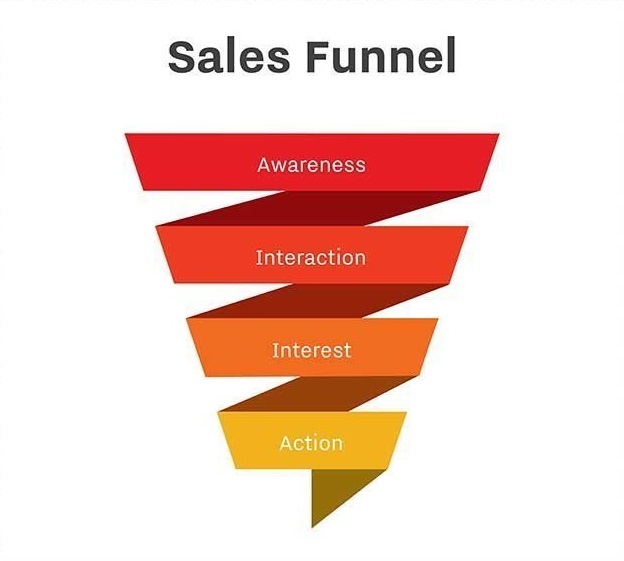Sales Funnel Definition
A sales funnel, also called a purchase funnel, is the visual representation of the customer journey, depicting the sales process from awareness to action.
The funnel, which is sometimes referred to as a marketing funnel or revenue funnel, illustrates the idea that every sale begins with a large number of potential customers, and ends with a much smaller number of people who actually make a purchase.
How the sales funnel works
Sales funnel stages will vary by company, but they are generally divided into four sections.
- Awareness: This stage includes the largest amount of customer prospects. It’s at this stage in which customers have determined a problem, begun searching for a solution and become aware of an organization via content marketing, an email campaign, social media marketing or other avenues.
- Interest: At this stage, the number of customer prospects begins to decrease, but the possibility of a sales conversion increases. This is generally when the customer will engage with the organization, request more information and ask questions.
- Decision: Once the customer has become aware of the organization, reached out and sought answers to questions, it’s time for the decision. This stage of the process may include sales offers and further research into the different options presented by the organization.
- Action: All of the previously mentioned stages funnel down into the final step: action. At this point, the customer has decided to purchase the product.
Sales funnel metrics
Companies use various metrics to analyze and score leads and prospects during the sales cycle to evaluate the success of their sales teams.

Sales funnel strategies
In today’s age of the customer, the journey a customer takes — sometimes referred to as the customer lifecycle — is less likely to be linear. For that reason, some experts maintain that the traditional sales funnel is obsolete.
Others contend that the sales funnel is still a valuable tool, as long as marketing and sales teams understand two things — that qualified sales leads may enter the funnel closer to the bottom than they would have 10 years ago, and that marketing’s role is changing.
In the past, lead generation (the top, and broadest, part of the funnel) was typically the responsibility of marketing departments, while sales was responsible for nurturing leads and guiding prospects through the sales pipeline.
Today, a successful company relies on both sales and marketing to guide the customer through the sales funnel and to build customer loyalty, taking advantage of content marketing, customer data analytics and the two-way communication that social media marketing provides.